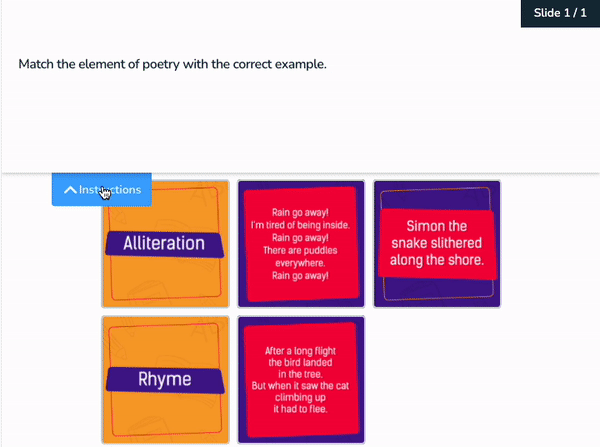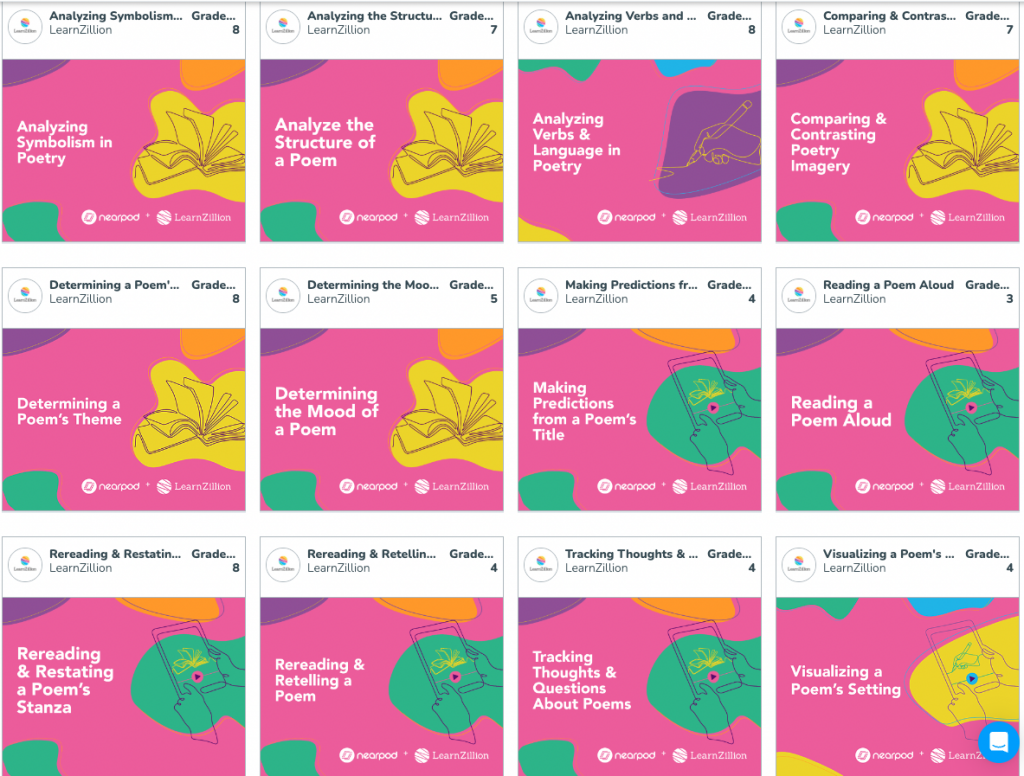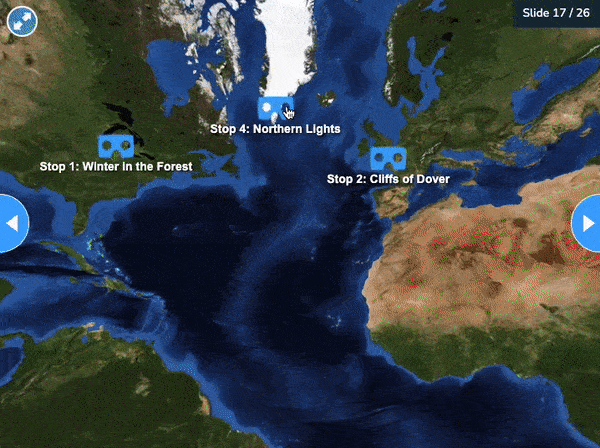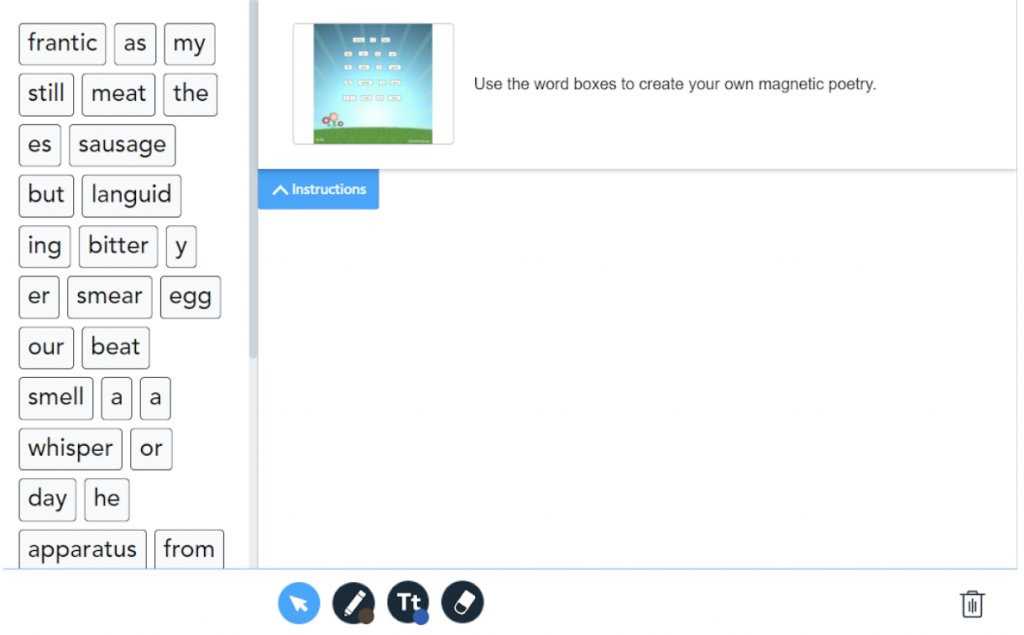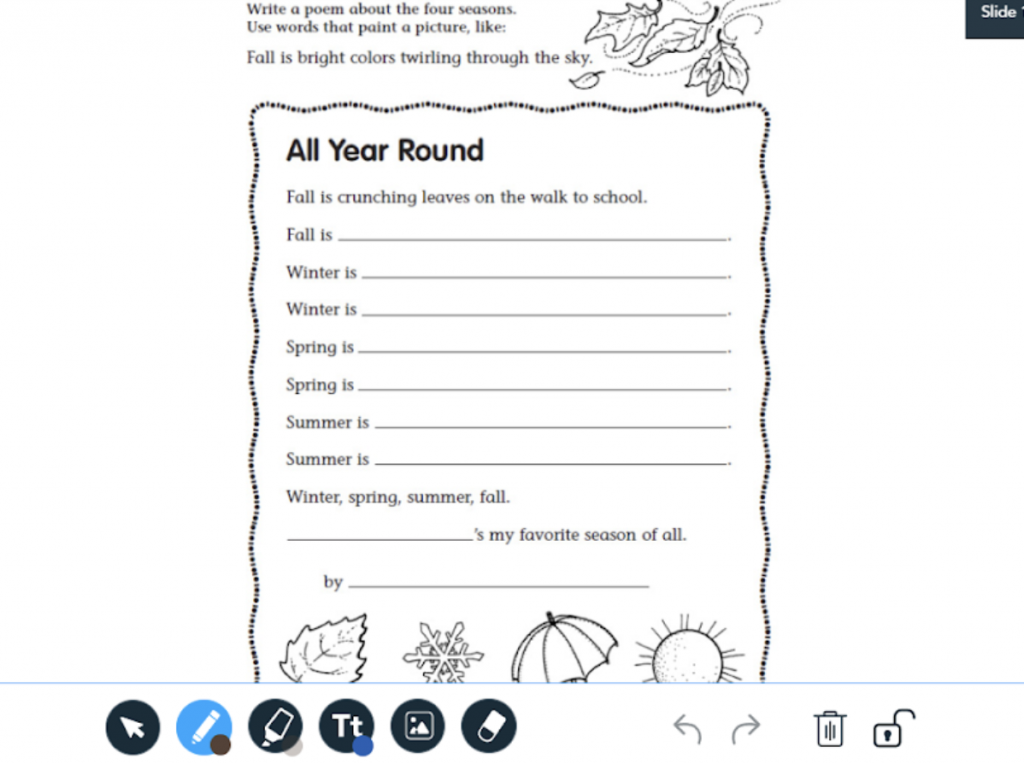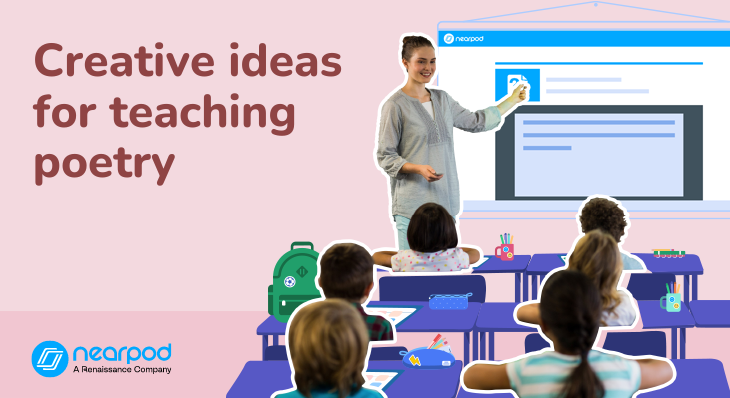
Poetry Month Activities: 7 creative ideas for teaching poetry
When is Poetry Month?
April is National Poetry Month, an annual celebration established in 1996 by the Academy of American Poets to increase awareness and appreciation of poetry in the United States. It is a time to celebrate the diversity and richness of the literary arts and explore how poetry can inspire, uplift, and transform us. Teaching poetry activities can be a fun and creative experience, and there are many ideas you can use to help students understand and enjoy this literary art form. Whether you are a seasoned teacher or new to teaching poetry, these creative Poetry Month ideas will have your students engaged and appreciating poems.
New to Nearpod? Teachers can sign up for a free Nearpod account below to access these resources, interactive activities, and engaging lessons. Administrators can schedule a call with an expert to unlock the full power of Nearpod for schools and districts.
Poetry Month Activities: 6 engaging ideas for teaching poetry
1. Teach the foundations of poetry
Before reading and analyzing poetry with students, it’s important to teach them foundational knowledge. Although art is subjective and poetry is art, there are many basic elements students should know about beforehand. After all, understanding the work that goes into it and its history will help students appreciate these literary masterpieces.
Here are some lessons, activities, and videos you can use to introduce poetry in the classroom:
- Identifying Elements of a Poem (Grade 2): In this Matching Pairs activity, students strengthen their understanding of the elements of a poem and identify poetic elements in sentences.
- What Is Poetry? (Grades 4-8): In this investigative video from Nearpod Originals, students learn that poetry can be almost anything—but often includes figurative language and sound devices. They also consider how song lyrics are a form of poetry.
- Learn Zillion’s Poetry Series (Grades 4-8): This poetry lesson collection from Nearpod and Learn Zillion includes lessons about reading and writing poetry, covering topics such as setting, mood, theme, structure, symbolism, and more. Choose a lesson, launch it as is, or modify it to fit your student’s needs.
2. Inspire students to write poems using virtual reality
Poetry tends to be descriptive and visual, so pricing them with inspiring visuals can result in creative writing. Instead of simply showing a static image for visual inspiration, immerse them into a setting using a Virtual Reality (VR) Field Trip. Don’t worry, no headsets are needed for this! Students will need to have their own devices, such as a laptop, tablet, or smartphone, or teachers can simply project the VR experience on a screen in front of the class.
Here are some VR lessons you can use for free:
- Ode to the Simple Things (Grades 6-8): In this VR lesson, students explore odes and how poetry can be about simple as well as complex things. Students take a virtual field trip to a beach with many pebbles, and then write an ode to pebbles.
- Conjuring the Senses (Grades 6-8): In this VR lesson, students explore how the imagery of the five senses can enrich the meaning of a poem. Students take a virtual field to the Thames River and consider how the river would affect their senses.
3. Create Drag and Drop activities to practice magnetic poetry
Of all the fun poetry activities, magnetic poems and poetry frames can be adaptable for many grade levels. Nearpod’s Drag and Drop feature allows teachers to create digital magnetic poems. For example, teachers can encourage students to write about a time in their life, such as a memorable vacation or a special event, and have them drag and drop words that describe the experience. By having students drag text or images in a Drag and Drop, they can create more descriptive poems.
In the poetry prompts and draggable words, teachers can add higher-level vocabulary or simple decodable words depending on students’ abilities. Try out this activity!
4. For young writers, use poetry frames
Poetry Frames are another excellent source of inspiration for young writers. These graphic organizers can easily get students started writing their own poems. Teachers can create their own frames or upload premade ones into the Drag and Drop background. Help students model lyrics or even sonnets. If you have students create various frames, consider making poetry books with their work.
Ask students to write an original poem inspired by something that brings them joy to spark their creativity. Encourage them to share their work with family members and friends. Try out this activity!
5. Boost creativity visual or concrete poetry
Poetry is filled with imagery, and pictures are great resources to spark ideas. Try these Poetry Month ideas to incorporate visual imagery into your lesson plans:
- Using Nearpod’s drawing assessment tool, Draw it, students can create their own concrete poems, which are poems that take the shape of their topic.
- Teachers can upload PDFs of poem examples to accompany directions. Use poems by Jack Prelutsky or Shel Silverstein for a fun twist.
- Create a lesson where students can choose their own visual to inspire a poem. They can then write their poem using the Draw It or Open-Ended Question tool. This grants more creative freedom for students to take their poetry to new and interesting places.
- Students can write concrete poems directly into the lesson. Not only can teachers upload reference images into the Draw It activity, but students can also upload their own images or explore on Google Safe Search. Consider asking them to write a poem from the perspective of an inanimate object or an animal to challenge them to think outside the box and explore different viewpoints.
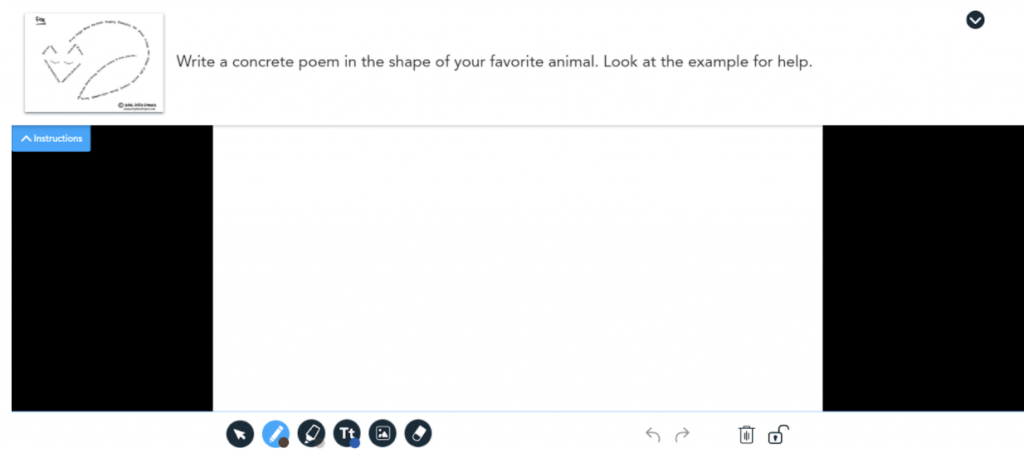
6. Shared poetry using the Collaborate Board
Good ideas often come with a little help. Shared poetry gives writers an extra boost. Using the Collaborate Board activity, the class develops shared poetry. Creating a shared poetry lesson in Nearpod is quick, simple, and impactful with these steps:
- Add an activity slide and select Collaborate Board.
- Type your lesson topic into the directions box. The beauty of this activity is that teachers have total control over the prompt – being as specific or broad as is necessary while still fostering creativity. Add a simple visual image as reference media to allow for multiple interpretations or give detailed directions/instructional aids for students to mimic certain poetic devices or styles.
- Assign your shared poetry lesson to the class by sharing the lesson code with students. So much flexibility is given that teachers can allow students to add to the shared poem individually or work in small groups.
- The whole class sees what’s being contributed to the poem in real-time. It’s a great opportunity to discuss creative poetry ideas and share thinking, even sharing comments!
Collaborate Board’s design layout allows students to add audio recordings and videos! Results are unexpected but wholly unique and diverse. The real trick is to pick broad topics while also being relatable. Themes like love, friendship, or nature give room for interpretation but are not too broad to disconnect students. Read the poem aloud to see their masterpiece come to life.
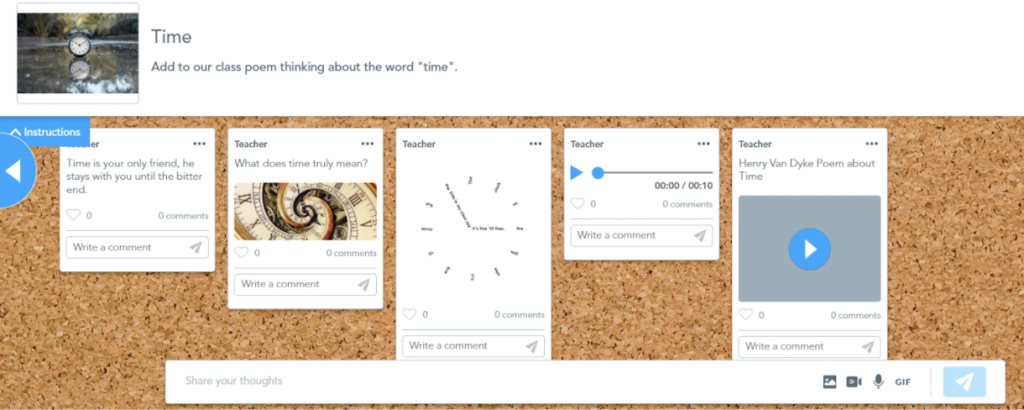
7. Use Flocabulary’s poem videos
Did you know that Flocabulary videos are available on Nearpod? You can use Flocabulary’s videos to create an interactive Nearpod lesson or video with embedded formative assessments. Explore more poetry activities using Flocabulary.
For example, you can teach middle and high school students Edgar Allan Poe’s “The Raven” through this adaption. Dive deeper into the literary devices by using the Tone & Mood lesson with The Raven adaptation.
You can find these lessons by searching “poetry” in the lesson library and then clicking “Flocabulary” in the Partners filter.*
*Only available to users with access to Flocabulary.
Start teaching poetry activities with the help of Nearpod
We’re so excited to see you use these tips in the classroom! Not only can you use these activities and ideas for Poetry Month, you can use them when teaching poetry to kids at any time of the school year. These poem ideas for school can help students build their writing skills while fostering a love for poetry. Nearpod’s interactive activities and lessons will keep your students engaged and learning, while supporting you as their teacher through real-time insights.
New to Nearpod? Teachers can sign up for a free Nearpod account below to access these resources, interactive activities, and engaging lessons. Administrators can schedule a call with an expert to unlock the full power of Nearpod for schools and districts.

Angelia Simpson has been a first grade teacher for nine years. With a classroom full of minions, she balances the wonderful line of chaos and learning. Passions include writing, technology, reading, and Corgis.
